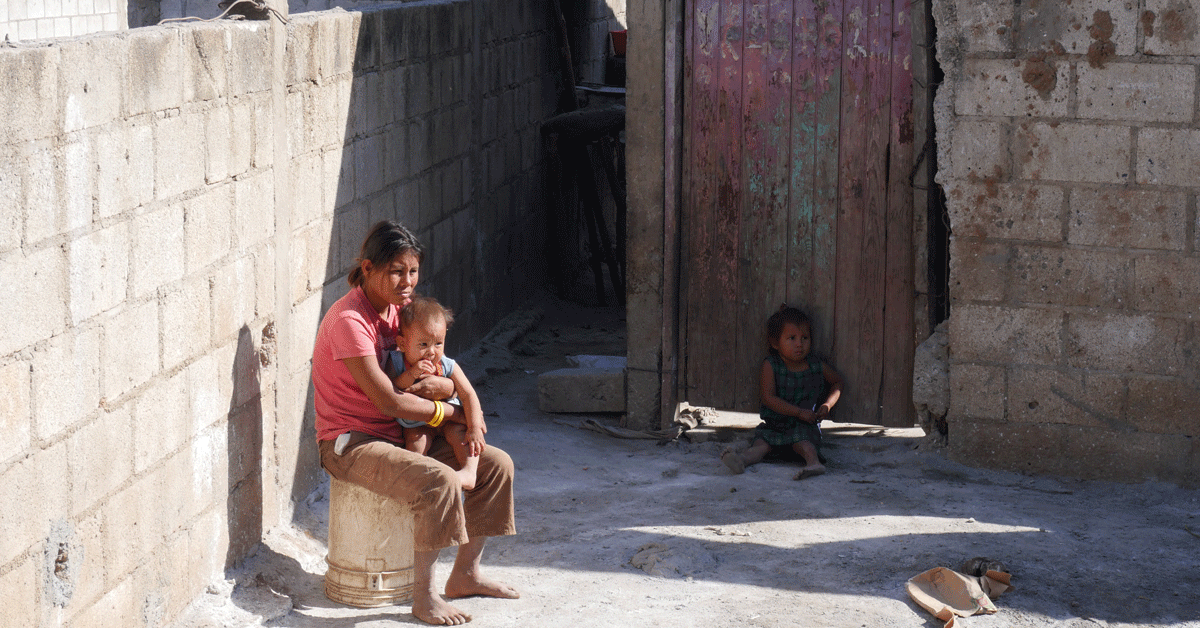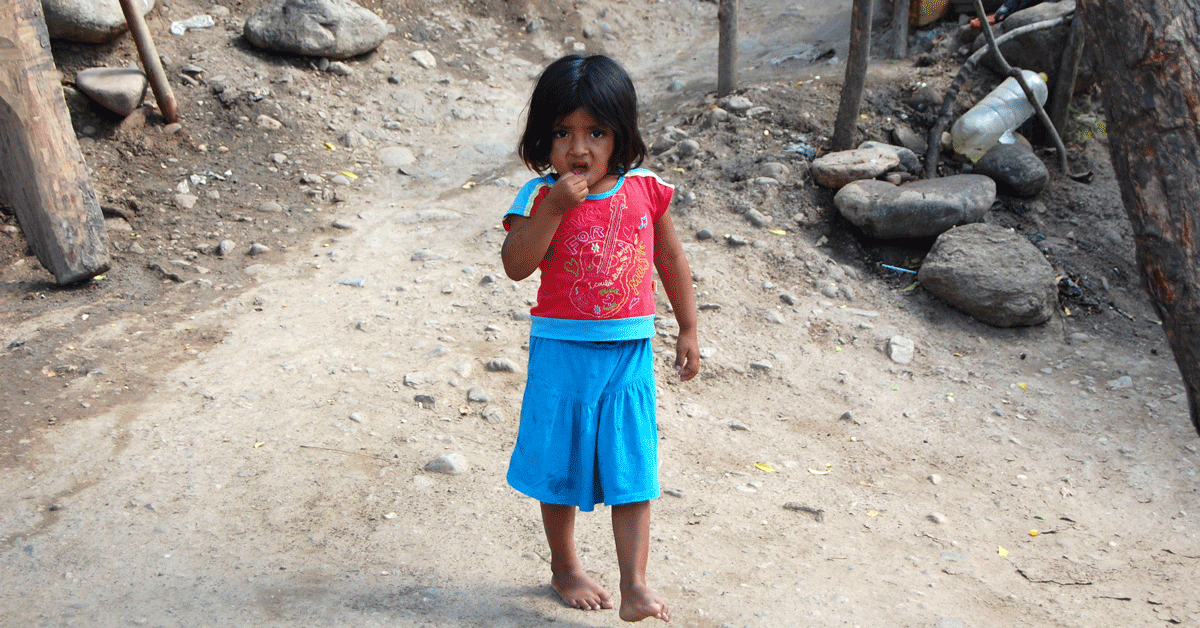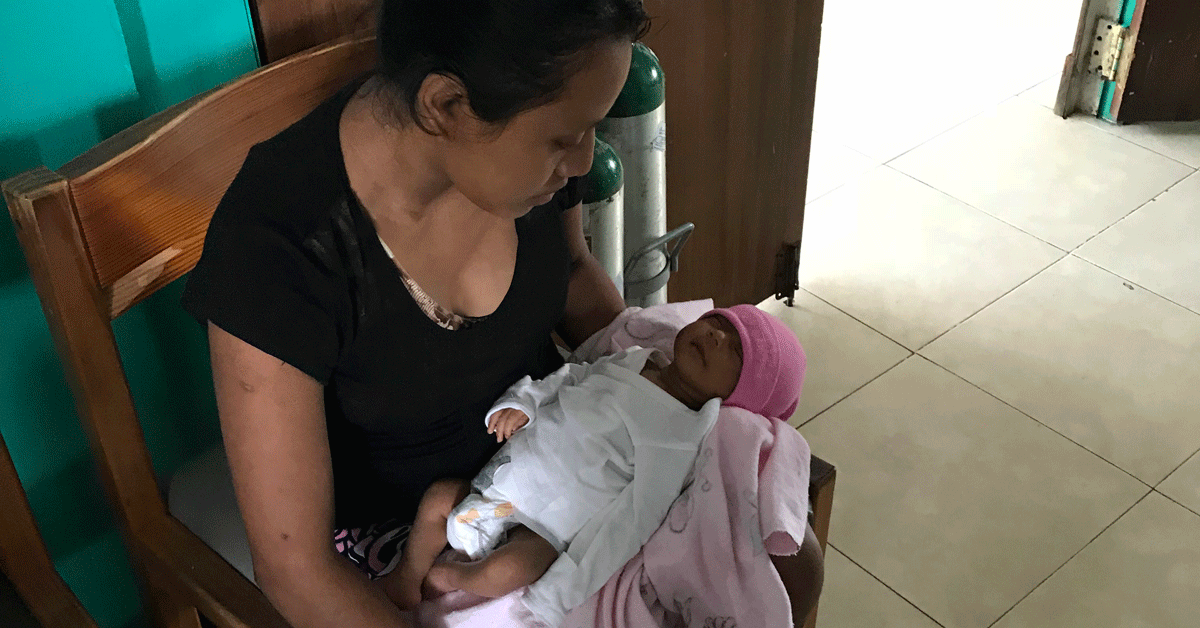Despite the meaning of her name, baby Genesis isn’t the beginning of her family’s story of struggle. That began long ago — decades before Genesis was ever born. And she isn’t the first in her family to suffer from malnutrition.
Unfortunately, malnutrition is a vicious cycle that is hard to escape. It’s rooted in poverty, and it grows and spreads throughout generations.
But a family’s story of pain and suffering from a lack of adequate food can end with you. It can end when you decide to give food to help save a child’s life.
You can break this generational cycle of hunger, malnutrition, and poverty for someone like Genesis:

Phase 1: Life in the womb
We’ll start where all life begins: in the womb. Genesis’ mother — whom we’ll call Areli to protect her privacy — was born into poverty. Most likely her mother was malnourished, too, and wasn’t able to provide Areli with the vital nutrients a baby needs to stay healthy.
So, Areli grew up malnourished with all the accompanying side effects: she was underweight, weak, and tired most of the time.
Phase 2: Childhood of pain
Children who live without consistent access to healthy food can suffer irreversible damage —physically, intellectually, and emotionally.
Many children who suffer from starvation will grow up lacking physical strength. And because extreme hunger stunts growth and the development of bones, kids don’t often aren’t able to walk or run.

But the damage doesn’t stop there. Not only are their physical bodies disabled, but also their intellectual development is stunted, as well.
Phase 3: No education, no future
Areli struggled to succeed in school, so like many Guatemalan teenagers, she eventually dropped out. After all, she was needed at home to help make a living.
Not long afterward, she married Genesis’ father, and they both began working in the coffee fields. However, the owner of the field knew that they weren’t educated, and he often took advantage of them. He would pay them less than they had earned because he knew they wouldn’t be able to do the math and discover they had been cheated.
Without adequate income, they struggled to afford healthy food. They remained underfed and malnourished into adulthood.
Phase 4: The next generation of malnourishment
When Areli found out she was pregnant with Genesis, she had no money or opportunities to nourish her unborn baby.
Most mothers in the U.S. have access to prenatal vitamins, and they can eat a healthy diet to ensure their babies grow and develop properly. But Areli didn’t have that luxury.

Once Genesis was born, Areli was too malnourished to breastfeed her infant. And Genesis’ parents are too poor to buy formula. So, the cycle of hunger continues. Genesis will inevitably follow in her mother’s footsteps.
But YOU can help end the cycle. By providing food for a hungry child like Genesis, you can help save a life.
When children have access to healthy food, everything about this cycle reverses. They are able to focus in school, get good jobs, and escape a life trapped in poverty. And, simultaneously, they’re protecting their future children from a life of suffering, as well.
You can be the new beginning a starving boy or girl needs. For only $40 you can feed one starving child for an entire year. A year with access to healthy meals means he or she will be able to get stronger and healthier — physically and mentally.
When you provide food, you’re helping save a life and providing holistic health.
Will you feed one child for one year? For $40, you can help put an end to the cycle of hunger … one child at a time.



